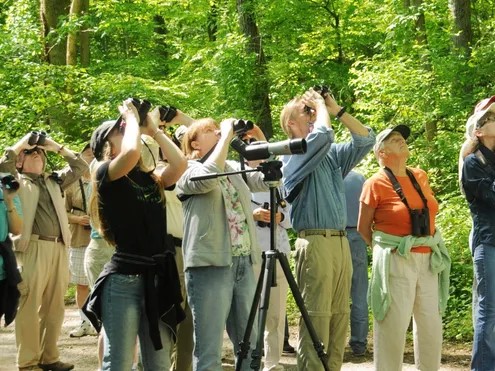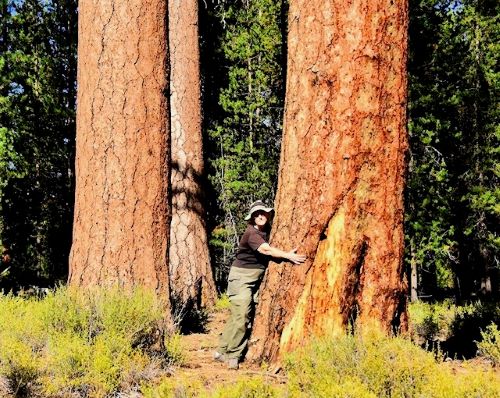The 3rd Saturday Bird Outing on July 20 will be at Clearwater Park in Springfield…
 In early June, we visited Summer Lake in Eastern Oregon to explore some areas new to us. We have driven through this high desert basin many times on the way to visit relatives near Lakeview, but never spent time there, and it was not a disappointment. The ODFW Summer Lake Wildlife Area is 18,941 acres in size, “with a goal of supporting wetland dependent wildlife and a diverse array of other wildlife and plant species for use and enjoyment by present and future generations.”
In early June, we visited Summer Lake in Eastern Oregon to explore some areas new to us. We have driven through this high desert basin many times on the way to visit relatives near Lakeview, but never spent time there, and it was not a disappointment. The ODFW Summer Lake Wildlife Area is 18,941 acres in size, “with a goal of supporting wetland dependent wildlife and a diverse array of other wildlife and plant species for use and enjoyment by present and future generations.”
There is an eight-mile drive through the wildlife area, as well as some basic picnic and camping sites adequately staffed by mosquitos. We did enjoy seeing many breeding bird species such as Western Grebes, Trumpeter Swans, Cinnamon Teal, Redhead, Black-necked Stilt, Avocet, Willet, Wilson’s Phalarope, and Yellow-headed Blackbirds. The most gratifying thing was the amount of water visible everywhere! Green grass, flowering sagebrush and wildflowers carpeted the valley. Willow, poplar, and cottonwood were green and healthy looking. The ample water supply created great habitat and food for breeding birds this year.
One day we drove to the Abert Lake and Rim area to see the water level in the lake. It was amazingly full, which was wonderful to see. Two years ago it had dried up for the first time since the 1930s. Having high lake levels provides a critical food supply for migrating birds that eat the brine shrimp that grow in the alkaline lake. Abert Lake is one of the largest lakes in Oregon. It is not deep (11 feet), but covers an area of 15 by 7 miles when full! The hillsides had an abundance of Indian Paintbrush interspersed with yellow balsamroot; huge boulders were covered with bright orange lichen, creating a surprisingly colorful hillside.
We also took two drives into the Fremont-Winema National Forest to the west of the Summer Lake basin. One day we went to Thompson Reservoir and saw some great high-country birds, such as Lewis’s Woodpecker, Mountain Bluebirds, Clark’s Nutcracker, Western Tanagers, flycatchers and several Bald Eagle and Osprey pairs that nest near the lake. The flanks of the mountains have juniper and sagebrush, with some burned areas good for bird watching. There are craggy rock formations and some volcanic rock areas as well. The higher elevations have ponderosa and lodgepole pine, true fir, mixed conifers, and some aspens in the high meadows. Wildflowers were spectacularly blooming and many had yet to open. The array of blooming flowers changes weekly as the progression of blooms creates a stunning palette of changing colors. It promises to be a good year for the late summer migration of Rufous Hummingbirds, which use these blooms for nourishment on their way back to Mexico and Central America.
Another drive into the mountains took us to the high point of the Fremont Lookout, at 7,135 feet elevation. This point is 3,000 feet above the valley below. It affords views of Mount Shasta to the south and the Three Sisters to the north, plus a panorama of landscape features. Birds from the mountains and the valley were cruising by us as we spent time snacking at the picnic bench. A group of 30 American White Pelicans slowly lifted up from Summer Lake and circled for several minutes, gaining altitude with each spiral. Finally they soared up and over the ridge to catch a breeze heading southwest to another lake on their itinerary. Over the 4 days we tallied 102 bird species. Half the fun of getting into the outdoors is waiting and watching to see what will be there. The treasure hunt for birds brings many other rewarding sights into our field of view. Have a great summer—Oregon is worth exploring!



